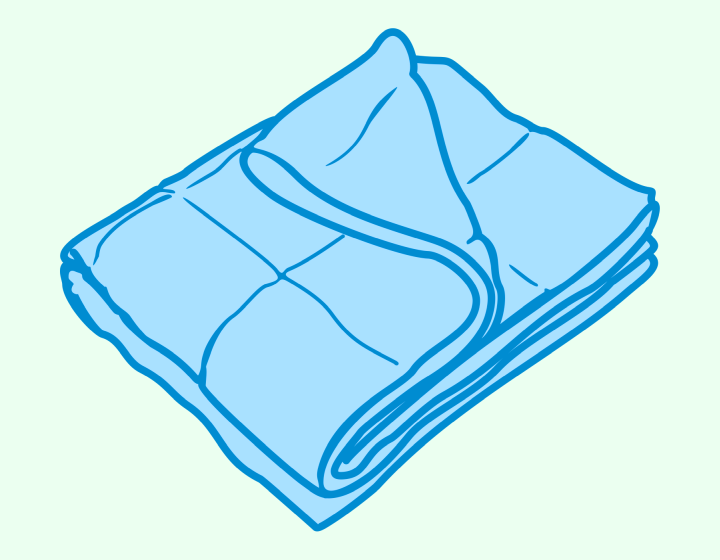To provide services at the highest level, we use cookies. Using the website requires you to choose settings related to their storage on your device. If you want to know what each type of cookie is used for, click the Details button below.
Weighted coverlet – does it harm or help?20 października 2023 |

A weighted blanket, also known as a sensory or therapeutic blanket, is a type of specialized duvet filled with glass or plastic beads or other materials. These are what give the weighted blanket its characteristic weight. Although at first glance it may seem similar to a traditional duvet, it differs significantly in terms of construction and purpose.
The essence of using a weighted blanket lies mainly in the application of a technique called deep pressure touch (DPT) or deep touch pressure (DTP). This form of therapy is based on deep pressure on the body, primarily aimed at inducing a feeling of relaxation and calm in the patient. The weight of the weighted blanket itself exerts even pressure on the body, which can help stimulate the nervous system and increase the levels of hormones such as serotonin and melatonin, which affect well-being.
The difference between a weighted blanket and a traditional duvet primarily lies in their purpose. A classic duvet aims to provide comfort and warmth during sleep, while a weighted blanket focuses on therapy and sensory regulation for individuals who need it. Therefore, it's not recommended to use a weighted blanket as an ordinary blanket for everyday sleep, except for therapeutic purposes.
It's also worth noting that a weighted blanket is not suitable for everyone. Individuals with certain conditions, such as breathing problems, as well as elderly people or infants, should avoid using this type of bedding. It's always important to consult with a doctor or therapist before starting to use a weighted blanket, especially for ill individuals.
A weighted blanket can serve as valuable emotional support for many individuals. Its therapeutic properties allow for stress reduction, improved sleep quality, and emotional self-regulation. When used thoughtfully and consciously, it can be a valuable tool for enhancing overall well-being and mental health.
A weighted blanket can be used regularly as part of sensory therapy, but its usage should be determined in consultation with a therapist or physician. There is no strict rule regarding how often one should sleep under a weighted blanket as it depends on individual needs and bodily responses.
Weighted blankets are primarily recommended for individuals with deep sensory processing disorders, such as sensory integration disorder. Others may occasionally use them during periods of heightened emotional tension, such as anxiety or stress. Nevertheless, it is always important to consult with a therapist, occupational therapist, or physician before using a weighted blanket to assess whether it is a suitable solution for a particular individual.
A weighted blanket is typically filled with either beads or glass granules. These materials provide the appropriate weight and even distribution of pressure across the entire surface of the blanket. This allows the weighted blanket to create a pleasant feeling of compression, which can improve proprioception, or deep sensory perception. It can also provide relief for individuals with certain sensory disorders.
The effects of a weighted blanket can vary depending on the individual, their needs, and their unique response. There is no specific timeframe for expecting results. Some individuals may feel relief and effects immediately after use, while others may need several days or weeks of regular use to notice benefits. For individuals with deep sensory processing disorders, it is important to consistently use the weighted blanket as recommended by a therapist to observe its impact on well-being and bodily responses.